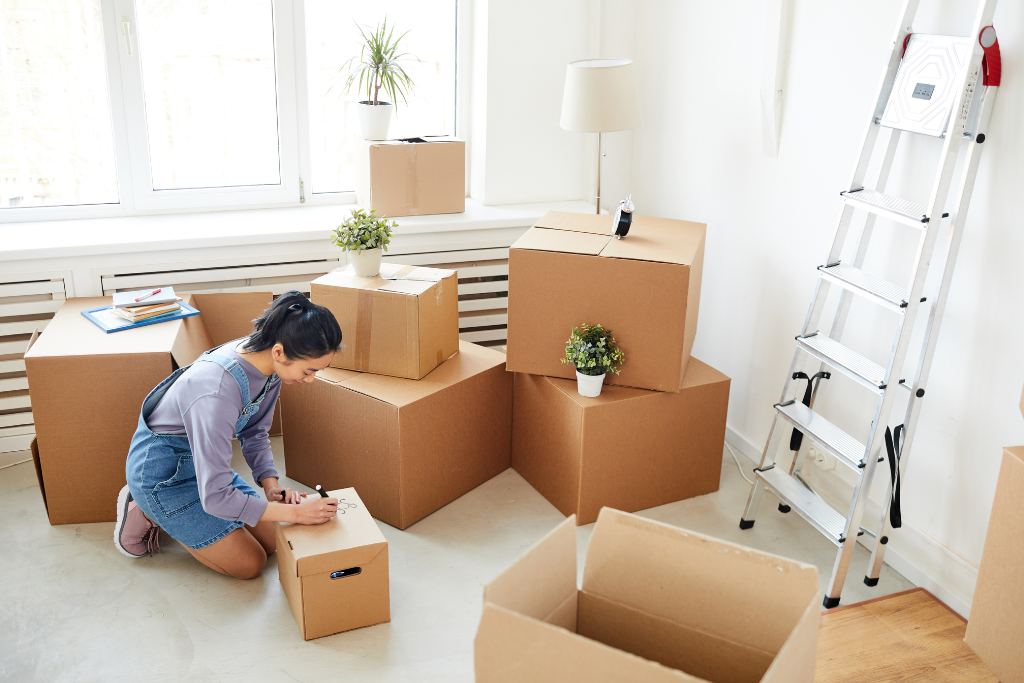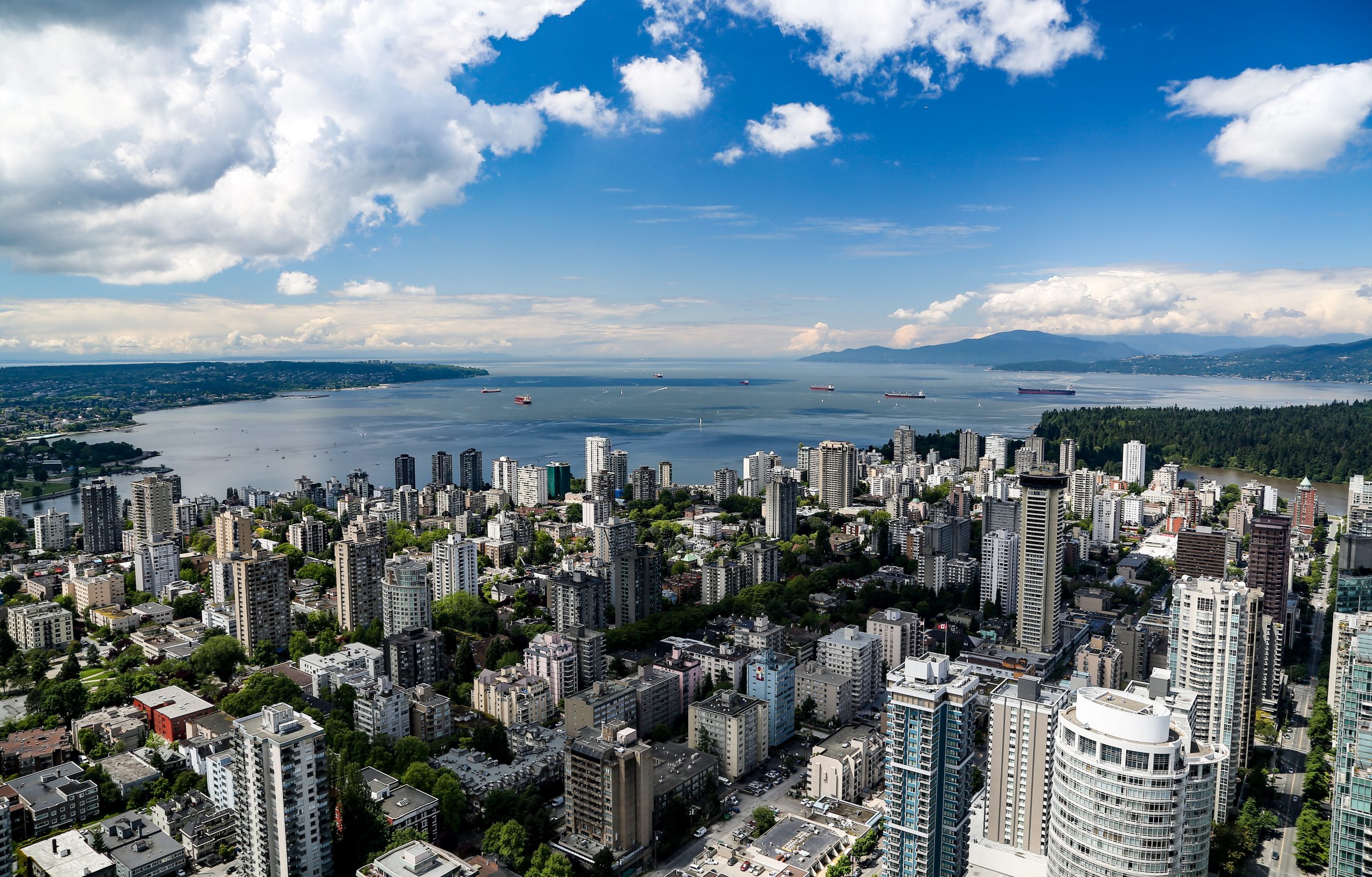How to pack a moving truck

Preparation
To start, declutter your home by sorting through your belongings and deciding what to keep, donate, or discard. This step reduces the number of items you need to move and makes packing more manageable. Create a detailed list of all items to move and their respective boxes to keep track of your belongings. Gather essential packing supplies, including:
- Sturdy boxes of various sizes
- Packing tape for securing boxes
- Bubble wrap and packing paper for cushioning
- Furniture pads and moving blankets for protection (to save money and save time you can use your own blankets)
- Corner protectors for furniture edges
- Shrink wrap to safeguard upholstered furniture
- Markers for labeling boxes
More tips: Consider utilizing list creating apps like Todoist or TickTick to digitally note your items. If needed, rent equipment such as a dolly or hand truck to assist with moving heavier items.
Protection
Before packing, disassemble large furniture pieces like beds and tables. Place screws and small parts in ziplock bags and label them clearly for easy reassembly. Use moving blankets or pads to wrap furniture, securing the padding with tape or straps. For additional protection, cover upholstered items with shrink wrap to keep out dust and moisture. For particularly valuable or fragile items, consider custom crates to provide extra security.
Loading the truck
When packing boxes for a long distance move, place heavier items at the bottom and lighter items on top to avoid crushing. Fill any empty spaces in the boxes with packing paper or bubble wrap to prevent movement. Clearly label each box with its contents and the room it belongs to. In the moving truck, maximize vertical space by placing tall, narrow items along the sides and packing tightly to prevent shifting. Pack a ‘Move-In’ Kit with essentials such as basic tools, cleaning supplies, medications and everyday kitchen items for easy access upon arrival.
How to pack a moving container
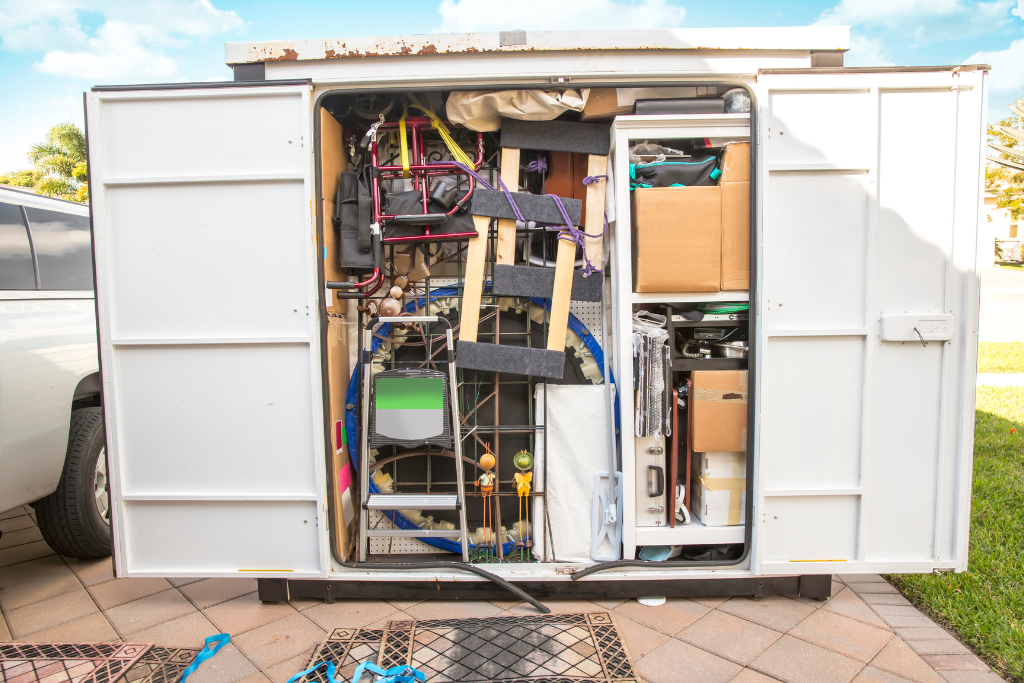
Preparation
When selecting a moving container, choose one that aligns with the volume of your belongings. Measure your largest items, such as furniture or appliances, and compare their dimensions with the container’s internal measurements to ensure a proper fit.
For space optimization, strategically plan the container’s layout to make the most of available space. Take into account the weight and size of your items when determining their placement to maximize efficiency.
Protection
- Furniture Care: Wrap furniture individually with moving blankets or pads to protect against scratches and dents. Secure items with straps or tie downs to prevent shifting. For high-value or delicate pieces, consider additional layers of protection like crating.
- Mattress Protection: Invest in mattress bags to shield mattresses and box springs from dust, moisture, and potential damage.
- Weatherproofing: Safeguard your belongings from the weather. Use weatherproof tarps or plastic sheeting to cover the container’s opening and protect items from rain, snow, or extreme temperatures.
Loading the container
- Load Order: Begin by placing heavy items at the container’s bottom to create a stable base. Progressively load lighter items on top, maintaining balance throughout.
- Space Utilization: Fill empty spaces with smaller items or packing materials to prevent shifting and damage.
- Box Selection: Use appropriately sized boxes. Smaller boxes are ideal for heavy items, while larger ones are suitable for bulky, lightweight belongings.
- Fragile Items: Fragile items should be loaded into the moving container with much care: either at the top or in the middle, surrounded by cushioning items like bubble wrap or blankets. They should be well packed and correctly labeled to avoid destruction and shifting while on the move.
How to pack a car
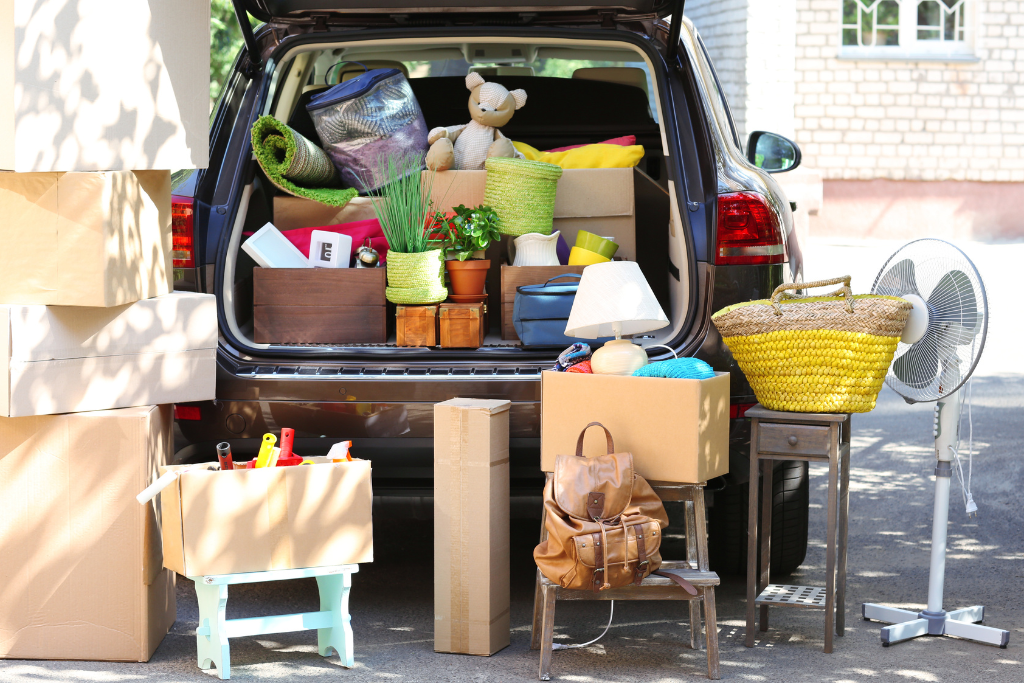
Packing and optimizing the space in your car
To make the most of your car’s space and ensure you have everything you need during your long distance move, start by packing essential items like:
- Important documents (passport, driver’s license, insurance)
- Medications
- Change of clothes
- Non Perishable snacks
- Toiletries
Keep these easily accessible in a tote or backpack. Use packing organizers or storage bins to maximize space and keep your belongings tidy. Protect fragile items with bubble wrap or packing paper, and safeguard electronics in padded cases. Remember to cover your car seats with protective covers.
When loading your car, distribute weight evenly, placing heavier items at the bottom. Securely pack larger items in the trunk. While trash bags can help consolidate items, be aware that for international moves, border inspections may cause delays. It can be challenging for customs officials to inspect items thoroughly when they are packed tightly in multiple trash bags.
Considering additional storage
For extra-carrying capacity, consider using a roof rack and cargo carrier. This can be a great option for bulky items that won’t fit inside your car. However, be aware that adding weight and size to your vehicle can affect fuel efficiency and handling. Ensure the cargo carrier is securely attached to the roof rack and that the combined weight doesn’t exceed your car’s roof capacity.
Useful tips:
- Check weather conditions and pack accordingly.
- Before the moving day, prepare an emergency kit with first-aid supplies, jumper cables, a flashlight, and other essentials.
- Ensure your car is in good mechanical condition before the trip.
- Consider purchasing extra insurance for added protection.
Which items should be packed in the car, and which ones should be left with the movers?
If you are hiring movers, but still driving your car to your new place here are some tips. Pack important and valuable items in your car to keep them with you during the move. These include personal documents, jewelry, hazardous products, plants, pets, high-value electronics, and smaller fragile items. Leave larger or less essential items for the movers to handle, as they are equipped to safely transport these items.
How to pack cardboard boxes

Wrapping
Wrap each item individually using bubble wrap or packing paper to protect against damage. For dishes and glassware, wrap each piece separately and stack them in small boxes to prevent shifting. Pack clothes in wardrobe boxes to keep them neat and prevent wrinkles. Use plastic bags for footwear and accessories to keep them organized and clean. Label each box clearly with its contents and the room it belongs to using color-coded tape or markers for easy identification.
What size boxes should be used?
Choose small boxes for heavy items like books and dishes to make them easier to carry and prevent overloading. Use medium boxes for medium weight items such as kitchen utensils, linens, and toys. Pack bulky but lightweight items like blankets and pillows in large boxes to optimize space and manage weight effectively.
How to pack plastic moving bins
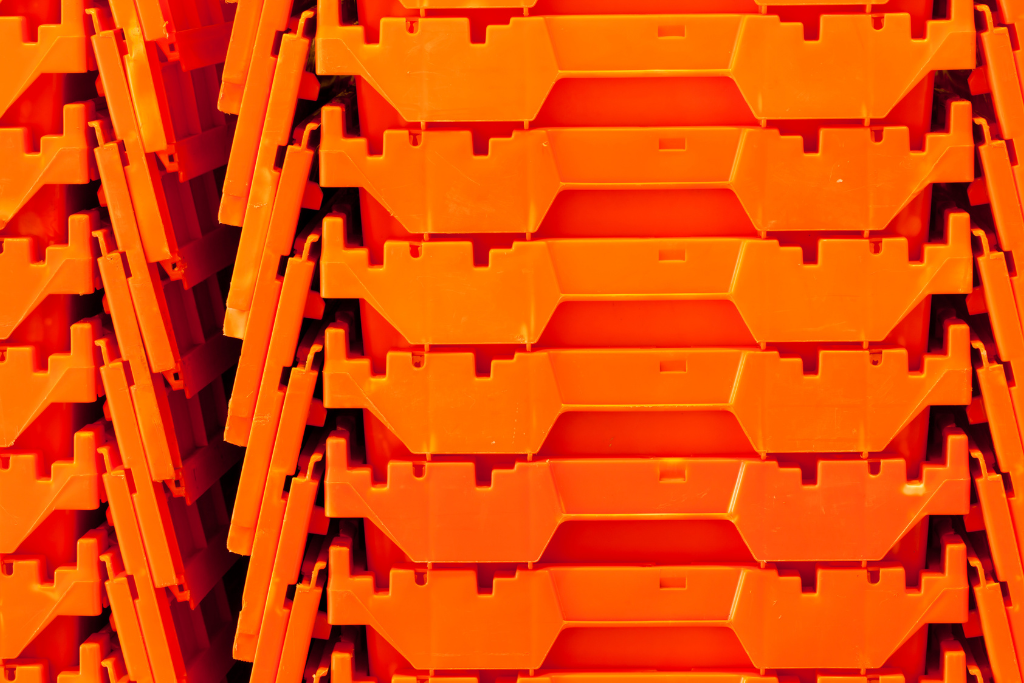
Why plastic bins are practical
Compared to cardboard, plastic storage bins are stiffer and waterproof, providing better protection against moisture and other hazards. They can be reused for future storage or moving, offering long-term value. Some plastic moving bins are clear, allowing you to see the contents without opening them. Also, moving bins can easily be stacked and may take up less space in the moving truck and home.
Packing tips
Protect fragile items in your plastic moving bins with bubble wrap or padded sleeves. For clothes, use garment bags/wardrobe to avoid wrinkles and save space. Place small containers over large ones for space efficiency. Remember to label every bin for easy unpacking later. Prevent items from shifting and breaking by filling empty areas with scrunched-up packing paper or soft textiles.
Tape, zip tie, or plastic wrap the lid of your bin for extra safety. Don’t make bins too heavy to lift or carry; make them light enough so they are easy for you or others to handle without tearing open at the seams and causing damage to your items. Don’t forget to bend your knees!
How to prepare for your long-distance moving company
If you are hiring a moving company, make sure all boxes are clearly marked with contents and what room they go into. It makes it easier on the movers if you group items from the same room together so the movers can flow from room to room. You also want to give a floor plan of your new home to help the long distance movers place the boxes in their proper rooms.
It is easy for movers to travel through a home if there is a clear pathway for them, so make sure the hallways are decluttered. Without doing too much effort, place boxes and items in areas that can be easily loaded onto the moving truck. Don’t forget to tell the movers which boxes and items you want to use first so they can pack them last!
Conclusion
Moving across the country can be a stressful task, but with careful planning and execution, it can be a smooth transition. By following these packing strategies, you’ll be well prepared to protect your belongings and streamline the moving process.
Begin by decluttering and organizing your items to make packing more efficient. Utilize quality packing materials like boxes, bubble wrap, and moving blankets to safeguard your possessions. Clear and concise labeling will save you time and frustration when unpacking.
Consider your chosen method of transportation – moving truck, container, or car – and pack accordingly. Distribute weight evenly and protect fragile items with care. If using professional movers, provide a detailed floor plan to expedite the unloading process.
With these tips in mind, you can confidently tackle your long-distance move and look forward to settling into your new home.
